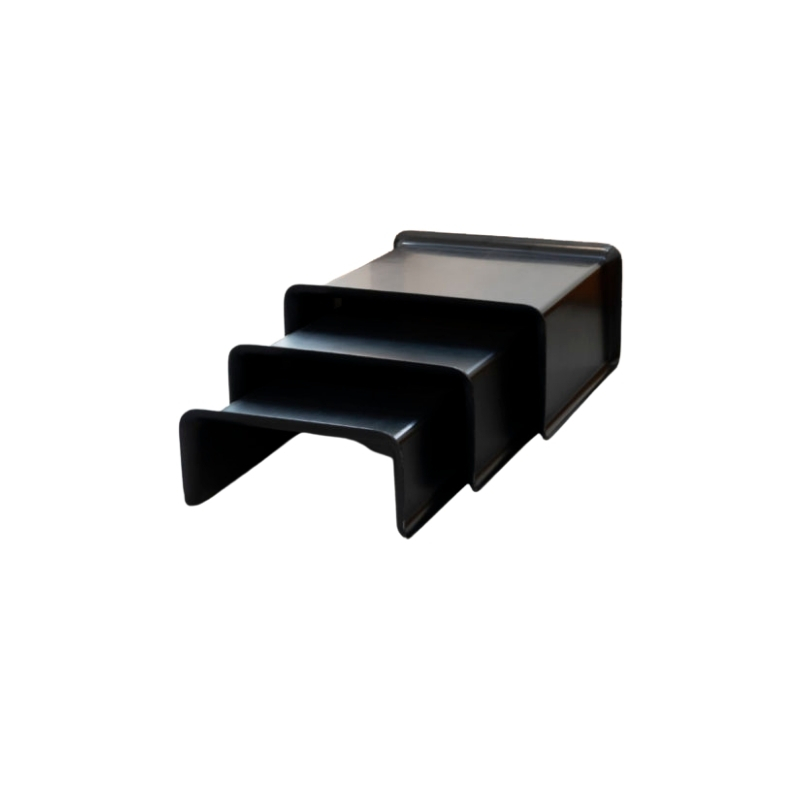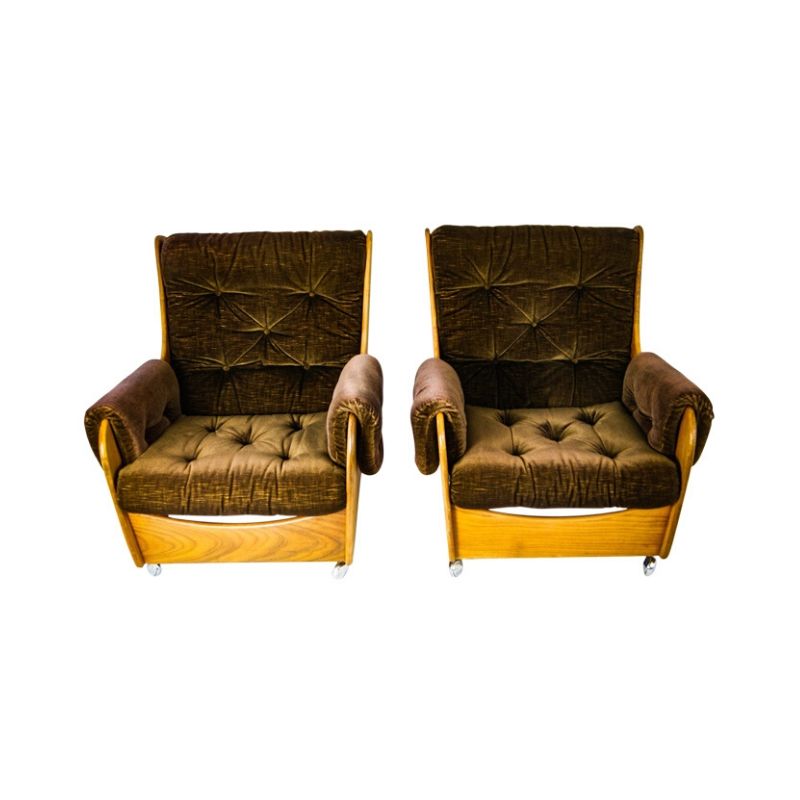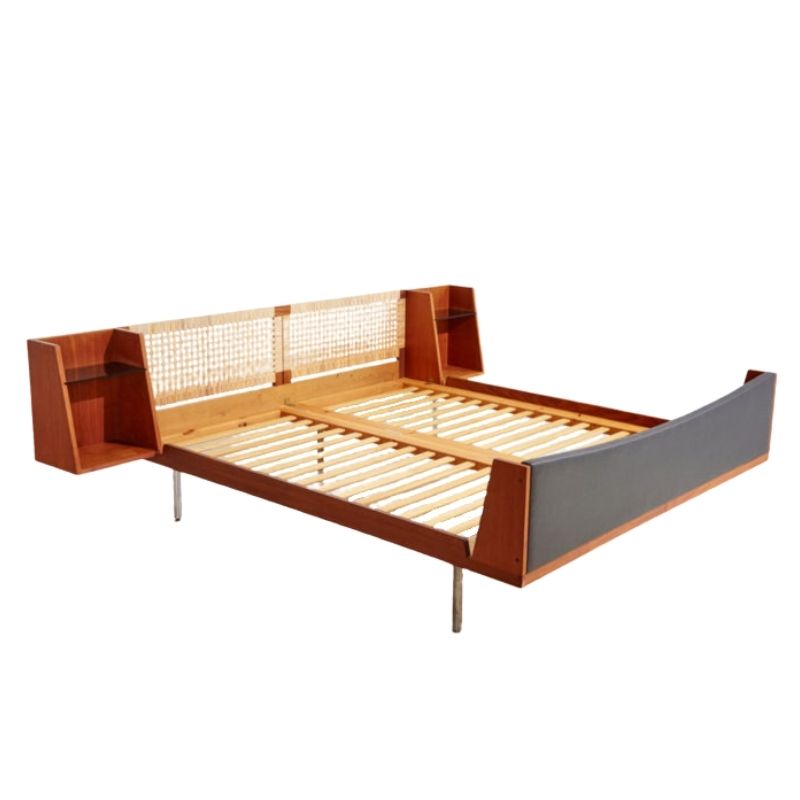Fragile? No.
Not my understanding at all. Only that they sold a lot less of that design so they dropped it from the line. Like the cat's cradle.
We have a dowel leg chair and have had others in the past. I've never been afraid to use them, and I'm NO waif.
I don't know why anyone would think that they were too fragile back in the day, but they are Ok to be made and used today. Modernica has not discovered some unbreakable wonderwood. Of course, the way the Vitra chair's legs are spread out, I might worry about those legs splitting.
Study
the photos of the original (brown) dowel base chair above. Look at the width of the seat, and compare it to the footprint of the base. The laws of physics aren't rewritten to favor attractive design -- they apply to all.
I agree that the reworked chair is disappointing -- or infuriating, to those of us who value original design, faithfully observed in every detail. I don't have ready access to one of these original chairs, but I wouldn't be surprised at all (based on what I see above) to find that the design results in a less stable chair than would be typical, and desirable.
I am one of those who applaud when I see a (European, or South American) architectural interior featuring a stair without a handrail -- or at least one with larger than 4" baluster openings (smaller that a baby's skull), the current US standard. But we all know we live in a litigious environment, and these are the consequences.
The attractiveness of the original design may depend, overtly or subconsciously, on the same aesthetic principle that renders a "top-heavy" vase so seductive -- potters used to call this quality "lift." But no one gets hurt if a vase is upset. . .
Are the makers of the reissued chair gutless, or just playing it safe ? Would we accept the new proportion (which, indeed, could have had a little wider spread of the legs at the top, reducing the slant some) if we had never seen the original ? Is that a fair question, or a prevarication ? We have to ask these questions, don't we, rather than just howling at the moon -- uselessly ?
Then -- we can write letters of outrage to Vitra !
Thanks,
Whitespike.
In support of the idea that the dowel base as originally designed does have equals in terms of stability, I find this photo of the comparable Saarinen chair. It would seem that the footprint here is no broader -- if it is possible to compare a disc with a square. . .
Still, it's hard to deny, I think, that most chairs have a more conservative (i.e., larger) footprint than these two modern classics do.
Hmm
Are they listing the base width measurement or just the seat?
The original looks much narrower (does not extend past the shell). Too bad I no longer have mine to verify, but I think it's pretty clear.
Edit: If you compare the tine length to height of the main column of the base in each pic, you can clearly see the difference that way. The photo of the original has the base at an angle which shows it at its longest (in two dimensions).
The length of the tine in the Vitra version is just as long as the height of column, if not longer.
If you need any help, please contact us at – info@designaddict.com









